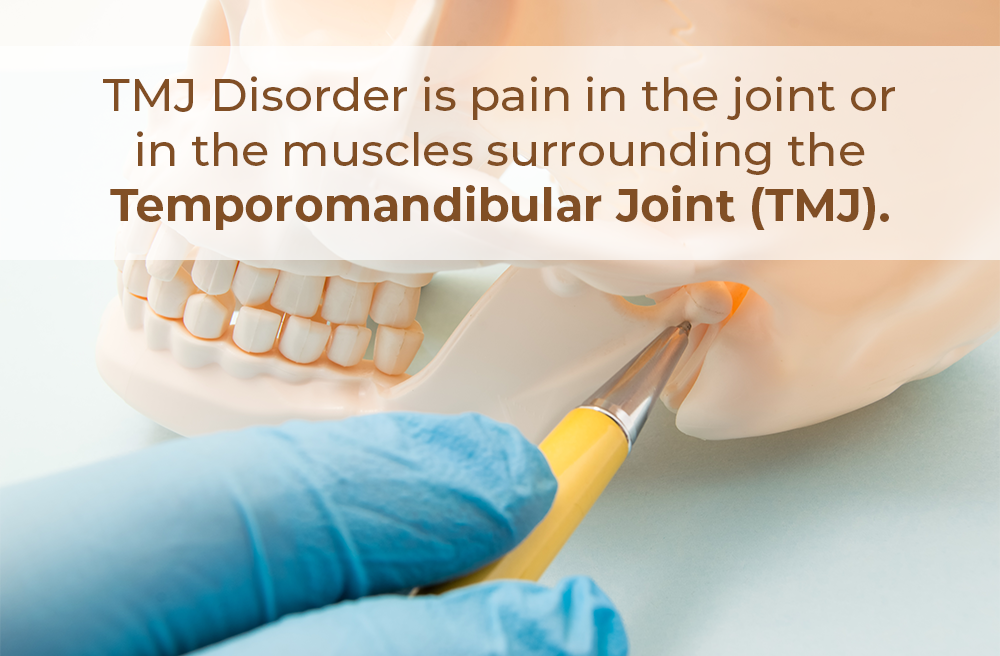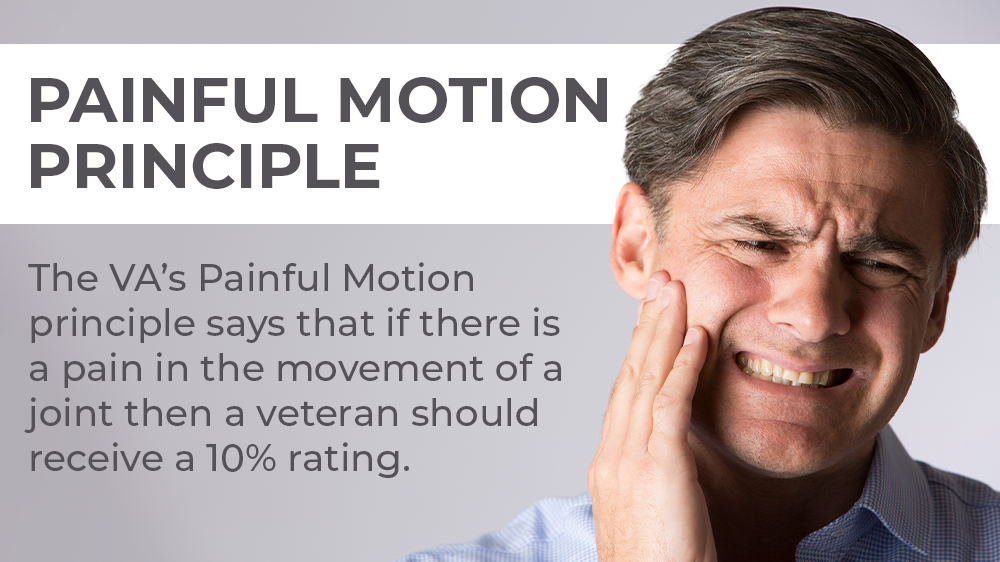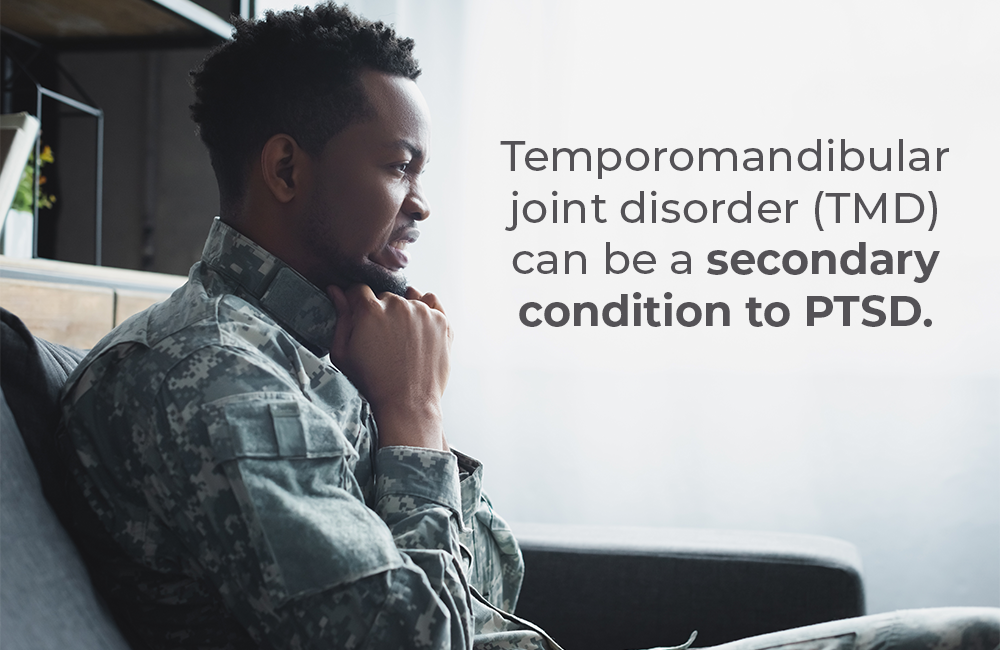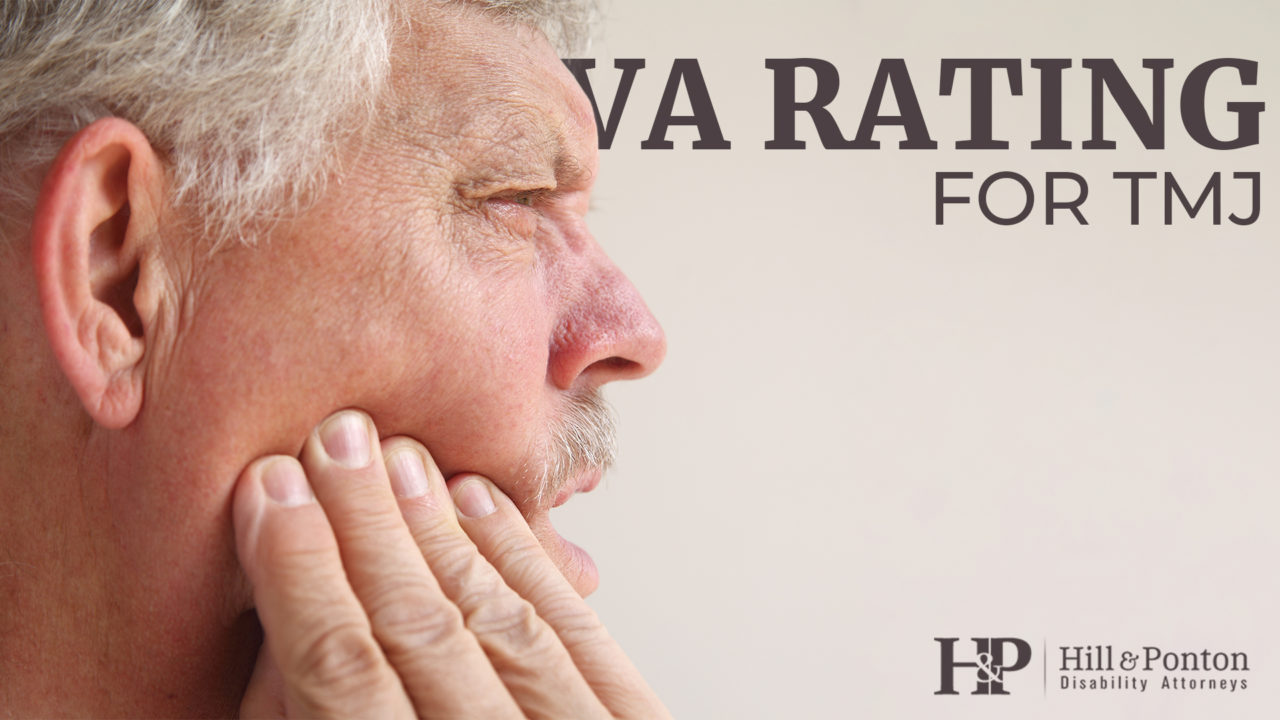What Is The VA Rating for TMJ Disorder?
Veterans living with temporomandibular joint disorder, or TMD, may be eligible for disability benefits through the U.S. Department of Veterans Affairs. While this condition is commonly referred to as TMJ, we’ll be referring to it as TMD for VA compensation purposes. TMD can cause pain and discomfort, as well as dysfunction of the jaw bone. This guide will break down the basics of veterans disability ratings for TMD.

What is TMD?
TMJ Disorder (TMD) is pain in the joint or in the muscles surrounding the Temporomandibular Joint (TMJ). The TMJ is a complex joint because it has to allow for the opening and closing of the mouth, as well as the front-to-back and side-to-side motions associated with chewing. TMJ Disorder (TMD) is pain in the joint or in the muscles surrounding the TMJ. People with TMD may experience pain or hear a clicking sound when opening and/or closing their mouth, and/or have decreased mobility of the jaw. This can cause limitation of motion in the jaw opening.
Although it can be difficult to know exactly what causes TMD, trauma to the TMJ and stress are known risk factors. We will address this link more in depth below.
Like all claims for service connection, the VA will be looking for a diagnosis, as well as a connection between the diagnosis and the veteran’s active duty service (nexus). So, please consider talking to your doctor or dentist about getting a formal diagnosis if you do not already have one. A doctor or dentist will assess the movement of the jaw to identify any symptoms. However, an x-ray, CT scan, or MRI is typically necessary for diagnosis. These images will also be key pieces of evidence in your veterans disability case.
What Is the VA Rating for TMJ Disorder?
The VA rating for TMJ Disorder is based on ratings schedule 38 CFR 4.150, which includes the rating criteria for all dental and oral conditions. TMD is listed under diagnostic code 9905. This diagnostic code measures the mm of maximum unassisted vertical opening.
The VA rates TMD based on limited motion of the TMJ, and the veteran’s ability to eat regular or mechanically altered food. This means the VA is looking at the degree to which a veteran has limited ability to open their mouth or move it side-to-side. The VA also considers if a veteran has to soften, chop, or blend (mechanically alter) their food to be able to eat due to TMD. The schedule of ratings refers to mechanically altered food as soft and semi-solid foods, pureed foods, and full liquid foods.
Keep in mind that the VA says “To warrant elevation based on mechanically altered foods, the use of texture-modified diets must be recorded or verified by a physician.” Please be sure to speak to your doctor and/or dentist about your TMD, and be sure to discuss any difficulties with eating regular food. It is important to have your provider record such difficulties in your medical records.

The VA’s Painful Motion principle says that if there is a pain in the movement of a joint then a veteran should receive a 10% rating, even if there is no functional loss or loss of range of motion. As TMD is defined as pain in the TMJ and/or its surrounding muscles, a veteran with TMD should be entitled to at least a 10% rating based on the Painful Motion principle.
Under this schedule of ratings, a veteran can receive up to a 50% rating. This means that they have 0 to 10 mm of maximum unassisted vertical opening with dietary restrictions to all mechanically altered foods.
It is also important to note that TMD is considered a dental disability to the VA. The VA offers any needed dental care for those with a service-connected dental disability or condition for which they receive compensation (i.e. a rating of 10% or greater). Click here for more information about VA dental care.
Is PTSD related to Temporomandibular Joint Disorder?
Post Traumatic Stress Disorder has been associated with numerous health conditions like heart disease and hypertension. However, there may also be a link between PTSD and TMJ Disorder.
A study comparing Iran and Iraq war veterans with and without PTSD to civilians with and without PTSD found that those with PTSD are more likely to have TMD than those without PTSD. These veterans are also more likely to have more severe symptoms of TMD. The study also found that war veterans had significantly poorer TMJ function, and higher rates of pain during palpation of the muscles surrounding the TMJ, than their counterparts who did not participate in war; this correlation was primarily linked to higher instances of trauma to the TMJ in war than in civilian life.

This may be because mental health conditions like PTSD increase stress levels, and stress may cause the veteran to clench their jaw more often. As mentioned above, tension in the jaw can lead to impairment of the TMJ, as well as significant pain. If you are service-connected for PTSD or sustained an injury to your TMJ in service, you may consider submitting a VA disability claim for TMD.
Post-traumatic stress disorder (PTSD) has been associated with numerous health problems, including cardiovascular disease, sleep apnea, and hypertension. You can read more about service connection for PTSD and secondary conditions here.
What other conditions are related to TMD?
The TMJ is located near other complex structures. Inflammation or trauma to the TMJ can result in complications with surrounding structures.
In addition to being a complex joint itself, the TMJ is located near other complex structures. Inflammation or trauma to the TMJ can result in complications with surrounding structures. One study found that tinnitus in people without hearing loss is a significant indication of undiagnosed TMD. Another study suggests that inflammation from TMD can press on the structures of the ear causing tinnitus and even hearing loss. TMD is also known to cause headaches, and neck pain.
Bruxism, which is the medical term for excessive teeth grinding or clenching, is often seen in those with TMD, as well as in those with PTSD. For VA purposes, bruxism can only be evaluated on a secondary basis as a symptom of another service-connected disability. Additional information about applying for bruxism can be found here.
Have Questions About VA Benefits for TMJ Disorder?
If you believe that your TMD resulted from an in-serve incident, but the VA denied your claim, contact the team at Hill & Ponton. Our veterans disability attorneys can assess your entitlement for veterans benefits, so you can appeal your claim. Contact us today for a free case evaluation.



